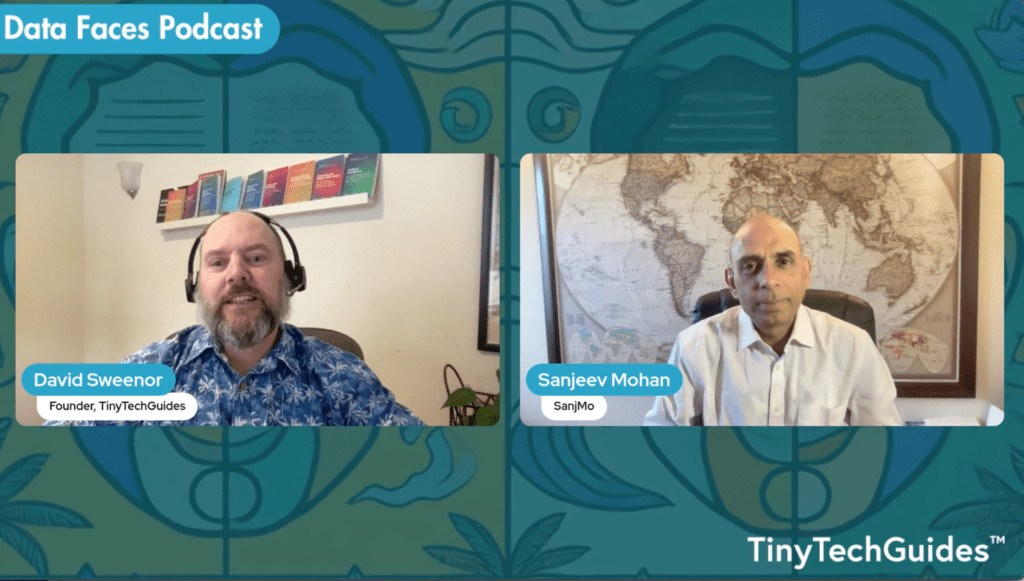Navigating the Generative AI Matrix

Introduction
Way back in 1999, the iconic sci-fi film The Matrix was released, where our hero, Neo, discovers that the world he perceives is nothing more than a simulated reality, a digital dream designed to keep humanity subdued. This revelation is presented to him through a choice between a red pill, which would awaken him to the truth, and a blue pill, which would keep him in blissful ignorance.
Drawing a parallel to today’s business world, we find ourselves at the cusp of a digital revolution, where generative artificial intelligence (AI) has the power to create content that is indistinguishable from what a human might produce. Just as the Matrix was a fabricated reality, the outputs from these AI models, while appearing plausible and authentic, might be entirely fictional.
Generative AI, with its ability to craft human-like content, offers immense potential for businesses. From content creation to customer service, the applications are vast. However, as Uncle Ben from Spider-Man stated, “With great power comes great responsibility.” As business leaders, it’s crucial to discern the real from the ‘simulated.’ While the content generated might seem accurate, there’s a risk of it being a mere ‘hallucination’—a piece of information that, although it looks and sounds right, is completely bunkum.
The rise of AI in the business landscape is undeniable. Its capabilities have transformed industries, streamlined operations, and created new avenues for innovation. Yet, as with any powerful tool, there’s a challenge: the potential for AI-generated misinformation. This is where the lines between reality and fiction blur, much like the simulated world of the Matrix.
But what if there was a way to see through the simulation? To discern the truth from the AI-generated mirage? Enter the Chain-of-Verification (CoVe) method. Think of it as the “red pill” for businesses—a way to awaken the true nature of AI outputs, ensuring accuracy and trustworthiness.
Reality & Perception: The Business Impact of AI Misinformation
In The Matrix, the line between reality and illusion is blurred. The inhabitants of the Matrix live their lives believing in a reality that is, in essence, a computer-generated dream world. This challenges our fundamental understanding of what’s real and what’s an illusion. Similarly, in the realm of AI, we are confronted with “hallucinations” – outputs from AI models that seem incredibly lifelike but are entirely artificial. More technically, a “hallucination refers to the generation of texts or responses that exhibit grammatical correctness, fluency, and authenticity, but deviate from the provided source inputs (faithfulness) or do not align with factual accuracy (factualness).”[1]
Hallucinations are inherent in all large language models (LLMs)—the underlying technology behind generative AI. A recent research paper stated, “In light of this observation, hallucinations remain a critical challenge in medical (Dash et al., 2023; Umapathi et al., 2023), financial (Gill et al., 2023) and other knowledge-intensive fields due to the exacting accuracy requirements. Particularly, the applications for legal case drafting showcase plausible interpretation as an aggregation of diverse subjective perspectives (Curran et al., 2023).“[2]
For these AI-generated realities, what should business leaders be concerned with?
Legal implications
A recent article from the New York Law Journal highlighted a case where an attorney was under scrutiny for citing several nonexistent cases in a memorandum of law.[3] ChatGPT, a large language model AI system by OpenAI, appeared to have generated these references. Such incidents underscore the potential pitfalls of relying on AI-generated content in critical domains like the legal profession.
To address this challenge, business leaders can add some checks and balances by implementing a “dual-review system” for all AI-generated legal documents and references. This system would use AI to create content drafts, followed by a human verification step to ensure accuracy and authenticity. However, this could quickly overwhelm human reviewers, which is why the chain-of-verification (CoVe) approach (to be discussed in the next section) may be a programmatic way of implementing this approach.
Brand reputation
Misinformation generated by AI can significantly damage a brand’s reputation. For instance, OpenAI faced a defamation lawsuit over a hallucination produced by ChatGPT.[4] Similarly, high-profile cases where AI chatbots went awry have been reported by reputable sources like The New York Times (see What Makes A.I. Chatbots Go Wrong?, The New York Times, 29 March 2023) and MIT Technology Review (see Why Meta’s latest large language model survived only three days online, MIT Technology Review, 18 November 2022).
To safeguard brand reputation in the face of AI-generated content, business leaders can adopt a “transparency and feedback loop” approach. As I argued in my posts on Generative AI Ethics and Regulating Generative AI posts, if users are interacting with AI, they should be aware.[5],[6] Thus, businesses should be transparent to consumers about when they are interacting or reading AI-generated content. Also, as we’ve seen in many apps, there also needs to be a feedback mechanism for users to report inaccuracies or issues with AI-generated content (thumbs-up, thumbs-down, report a violation). Lastly, organizations should create a dedicated SWAT team to address urgent matters–including public relations, media inquiries, and customer concerns.
Financial and strategic implications
Businesses that fail to address the challenge of AI misinformation risk financial losses due to lawsuits, loss of customer trust, and potential regulatory fines. Moreover, strategic decisions based on AI-generated misinformation can lead to missed opportunities or misguided investments.
To navigate the financial and strategic challenges posed by AI-generated misinformation, business leaders can establish an “AI governance board and contingency planning” framework. This cross-functional team would regularly conduct risk assessments to identify potential vulnerabilities in AI-generated outputs, especially in critical areas like financial forecasting, market analysis, and strategic planning. Before making major decisions, they should double-check and verify the data used to create the AI-generated insights. Lastly, they should implement upskilling initiatives within their organization to ensure that teams are trained to recognize AI hallucinations and are up to speed on the latest challenges and guidelines.
With its burgeoning list of AI-driven tools, the digital age offers businesses unprecedented advantages. However, as with the Matrix, leaders must discern the real from the simulated. The stakes are high, and the cost of being trapped in the AI Matrix can be detrimental to a business’s success and reputation.
AI Realities: The ‘Red Pill’ of Chain-of-Verification (CoVe)
Remember when Morpheus offered Neo a choice between two pills: a blue pill that would allow him to remain like a brain in a vat and a red pill that would awaken him to the real world? This choice symbolizes the difference between accepting a potentially deceptive reality and seeking the truth, no matter how unsettling it might be.
Similarly, in the world of generative AI, we are presented with outputs that, on the surface, seem incredibly real and authentic. But how can we be sure of their veracity? Just as Neo needed the red pill to discern reality from simulation, businesses need tools to verify the authenticity of AI-generated content.
Introducing the Chain-of-Verification (CoVe) Method[7]:
In the complex landscape of AI, the CoVe method emerges as a beacon of trust. It acts as the “red pill” for businesses, offering a systematic approach to ensure the reliability of AI outputs. At its core, CoVe is a programmatic approach designed to verify the outputs of AI models, ensuring that the information they produce is accurate and reliable. Without diving deep into technical jargon, think of CoVe as a multi-step fact-checking process for AI. It cross-references AI outputs with trusted sources, ensuring the final content is free from hallucinations or inaccuracies. CoVe consists of five steps that are conceptually simple to understand:
- Drafting the initial response: the LLM generates an initial draft response to a given query or prompt. For example, in the paper, they asked about where certain politicians were born and the primary cause of the Mexican-American War–the LLM might provide a detailed account, but some facts or dates could be incorrect.
- Planning verification questions: the system identifies potential claims or pieces of information within the initial draft that need verification. It then generates specific questions aimed at confirming the accuracy of these claims. If the initial draft claims a particular event occurred in 1990, a verification question might be, “When did [specific event] occur?”
- Independent verification: the LLM answers the verification questions using a different subset of the model or an entirely different model. This step is crucial to ensure the initial draft doesn’t bias the verification process. For instance, the verification model might confirm that the specific event occurred in 1989, not 1990, as initially claimed.
- Generating the final verified response: the initial draft is revised based on the answers obtained during the verification process. Any incorrect or hallucinated information is corrected to ensure the final response is accurate and reliable. In our example, the final response will correct the date of the specific event to 1989, providing a verified and accurate piece of information to the user.
- Optional feedback loop: there can also be a feedback loop where the system learns from the verification process to improve the accuracy of future initial drafts. If implemented, the system then learns from the corrected date and improves its accuracy in providing historical dates in future responses.
Why Business Leaders Should Care
In the age of information, trust is a valuable currency. As AI becomes an integral part of business operations, ensuring the reliability and trustworthiness of AI outputs is critically essential. Misinformation, whether unintentional (as in AI hallucinations) or malicious (as in deep fakes), can have dire consequences for a brand’s reputation, financial health, and customer trust.
Drawing parallels with The Matrix, there are scenes where the simulated reality is so convincing that individuals cannot differentiate between the Matrix and the real world. The dangers of this are evident when characters are deceived, manipulated, or harmed due to their inability to discern the truth.
In a similar vein, AI-generated realities, if left unchecked, can be misused in various ways:
- Deep fakes: AI-generated videos that superimpose existing footage with altered images, potentially spreading false information or damaging reputations. Did you see the dental ad that used Tom Hanks’ likeness?[8]
- Misinformation campaigns: Using AI to generate fake news articles or misleading content to influence public opinion. These seem to be a mainstay of elections around the world now.[9]
- Emotional manipulation: Creating AI-generated scenarios or content that affects human emotions, potentially leading to misguided decisions or actions.
Similar to Neo needing the red pill to navigate the Matrix, businesses need tools like the CoVe method to help improve the accuracy of LLMs. Even with CoVe, what other steps can they take?
The above threats should trigger business leaders to proactively safeguard the public, their employees, and their businesses. For deep fakes, many researchers and vendors are exploring using digital watermarks to guarantee authenticity. In addition to digital watermarks, organizations should make sure they have encrypted and trusted communication channels so that official content and communications can be securely transmitted.
As mentioned previously, equally crucial is the education and awareness front. Regular employee training sessions can equip them with the skills to discern and report suspicious content, acting as a first line of defense. Complementing this internal vigilance with public awareness campaigns can cultivate a discerning audience, reducing their susceptibility to misinformation and emotional manipulation.
Lastly, a rapid response SWAT is essential. By continuously monitoring brand mentions and narratives, businesses can detect anomalies early. Paired with a well-defined crisis management plan, this ensures that any potential threats are swiftly addressed, preserving brand integrity and stakeholder trust.
Conclusion: The Future of Trustworthy AI in Business
The Matrix is more than just a cinematic masterpiece; it’s a philosophical exploration of self-awareness, choice, and the relentless quest for truth. As Neo journeys from ignorance to enlightenment, he grapples with profound questions about reality, autonomy, and purpose. While set in a dystopian future, this narrative offers invaluable insights for business leaders navigating the AI landscape.
Lessons from “The Matrix”:
- Self-awareness: Just as Neo awakens to his true potential, businesses must recognize the transformative power of AI. However, with this power comes the responsibility to use it ethically and responsibly.
- Choice: Morpheus tells Neo, “I can only show you the door. You’re the one that has to walk through it.” Similarly, businesses have a choice – to use AI mindlessly or to approach it with a critical, informed perspective.
- Quest for truth: The Matrix teaches us that appearances can be deceptive. In the world of AI, what seems real might be a hallucination. The pursuit of truth, for verifiable and accurate information is paramount.
Navigating the AI Landscape:
For business leaders, the challenges and complexities of the AI landscape are many, but it’s certainly navigable. To plot your course, remember the following:
- Take a critical approach: While AI offers unprecedented advantages, it’s crucial to approach AI-generated content with a discerning eye, appreciating its potential while being vigilant of its limitations.
- A trusted brand is worth its weight in gold: In an age where misinformation can spread like wildfire, ensuring the accuracy of AI-generated content can enhance brand trust and reputation.
- Generative AI is transformative: Reliable AI-generated insights can empower businesses to make informed decisions, driving growth, innovation, and competitive advantage.
- Lead from the front: In a competitive business landscape, ensuring AI accuracy can be a game-changer, setting businesses apart from their competitors.
- Be proactive: Rather than reacting to AI hallucinations, proactive measures like the Chain-of-Verification (CoVe) method can ensure AI reliability from the outset.
A Call to Action:
The future of business is intertwined with the future of AI. As we stand at this crossroads, the lessons from The Matrixserve as a beacon, guiding us toward a future where AI is not just powerful but also trustworthy. Business leaders are urged to prioritize AI trustworthiness, ensuring that the digital age is marked not by deception but by innovation, ethics, and progress.
If you enjoyed this article, please like the article, highlight interesting sections, and share comments. Consider signing up for the newsletter at the bottom of the page as well as following me on Medium and LinkedIn.
If you’re interested in this topic, consider TinyTechGuides’ latest report, The CIO’s Guide to Adopting Generative AI: Five Keys to Success or Artificial Intelligence: An Executive Guide to Make AI Work for Your Business.
[1] Ye, Hongbin, Tong Liu, Aijia Zhang, Wei Hua, Weiqiang Jia, and Zhejiang Lab. 2023. “Cognitive Mirage: A Review of Hallucinations in Large Language Models.” https://arxiv.org/pdf/2309.06794.pdf.
[2] Ye, Hongbin, Tong Liu, Aijia Zhang, Wei Hua, Weiqiang Jia, and Zhejiang Lab. 2023. “Cognitive Mirage: A Review of Hallucinations in Large Language Models.” https://arxiv.org/pdf/2309.06794.pdf.
[3] Dynkin, Barry, and Benjamin Dynkin. 2023. “AI Hallucinations in the Courtroom: A Wake-up Call for the Legal Profession.” New York Law Journal. June 14, 2023. https://www.law.com/newyorklawjournal/2023/06/14/ai-hallucinations-in-the-courtroom-a-wake-up-call-for-the-legal-profession/.
[4] Poritz, Isaiah. 2023. “OpenAI Hit with First Defamation Suit over ChatGPT Hallucination.” News.bloomberglaw.com. June 7, 2023. https://news.bloomberglaw.com/tech-and-telecom-law/openai-hit-with-first-defamation-suit-over-chatgpt-hallucination.
[5] Sweenor, David. 2023. “Generative AI Ethics.” Medium. July 28, 2023. https://medium.com/towards-data-science/generative-ai-ethics-b2db92ecb909.
[6] ———. 2023b. “Regulating Generative AI.” Medium. August 8, 2023. https://medium.com/towards-data-science/regulating-generative-ai-e8b22525d71a.
[7] Dhuliawala, Shehzaad, Meta Ai, Eth Zürich, Mojtaba Komeili, Jing Xu, Roberta Raileanu, Xian Li, Asli Celikyilmaz, and Jason Weston. 2023. “CHAIN-OF-VERIFICATION REDUCES HALLUCINATION in LARGE LANGUAGE MODELS.” https://arxiv.org/pdf/2309.11495.pdf.
[8] Taylor, Derrick Bryson. 2023. “Tom Hanks Warns of Dental Ad Using A.I. Version of Him.” The New York Times, October 2, 2023, sec. Technology. https://www.nytimes.com/2023/10/02/technology/tom-hanks-ai-dental-video.html.
[9] Robins-Early, Nick. 2023. “Disinformation Reimagined: How AI Could Erode Democracy in the 2024 US Elections.” The Guardian, July 19, 2023, sec. US news. https://www.theguardian.com/us-news/2023/jul/19/ai-generated-disinformation-us-elections.


